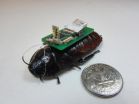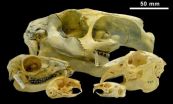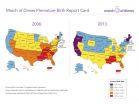For years, sociologists have identified seemingly universal human instincts that spur this kind of sorting. These include the desires for familiarity and certainty; for control and dominance; and for security and support.
But as ubiquitous as those instincts are, students in some schools form more cliquish, hierarchical, and segregated social structures than in others. What accounts for the variation?
It turns out that the organizational setting of a school itself, its "network ecology," has a big impact. Schools that offer students more choice -- more elective courses, more ways to complete requirements, a bigger range of potential friends, more freedom to select seats in a classroom -- are more likely to be rank ordered, cliquish, and segregated by race, age, gender, and social status.
By contrast, pecking orders, cliques, and self-segregation are less prevalent at schools and in classrooms that limit social choices and prescribe formats of interaction. Smaller schools inherently offer a smaller choice of potential friends, so the "cost" of excluding people from a social group is higher. In addition, structured classrooms guide student interactions in prescribed routes and encourage students to interact on the basis of schoolwork rather than on the basis of their external social lives.
Those are among the conclusions of a new American Sociological Review study, "Network Ecology and Adolescent Social Structure," published online today and scheduled to appear in the December print edition of the journal. The lead author is Daniel A. McFarland, a professor of education at Stanford Graduate School of Education.
"Educators often suspect that the social world of adolescents is beyond their reach and out of their control, but that's not really so," McFarland said. "They have leverage, because the schools are indirectly shaping conditions in these societies."
The study draws on an analysis of two datasets about friendships, one of which considers friendships at the classroom level and the other at the school level. At the classroom level, the researchers tapped into detailed data of friendships and social interactions compiled by McFarland at two very different high schools over a two-semester period. The school-level data came from the National Longitudinal Study of Adolescent Health.
The researchers found that large schools tend to accentuate the quest by adolescents for friends who are similar to themselves, an instinct that sociologists call "homophily." Bigger schools offer a broader range of potential friends, as well as greater exposure to people who are different. It's a mixture of freedom and uncertainty that spurs students to cluster by race, gender, age, and social status. But a school's size is only one factor. The researchers also found that a school's openness to choice spurs cliques and social-status hierarchies as well.
In schools with a strong focus on academics, where teachers have a hand in setting the pace and controlling classroom interactions, teenagers are less likely to form friendships based on social attitudes imported from outside the school. Instead, friendships are more likely to develop out of shared school activities and similar intellectual interests.
As the researchers put it, a positive educational climate strengthens the school's "system membrane" and makes it more impervious to "external" criteria for friendship such as race or social status. In other words, a more rigid school setting can sometimes promote more open-mindedness in making friends -- a potentially valuable quality in adulthood.
McFarland cautioned that the study doesn't mean that students are necessarily better off in small schools with less choice. For one thing, the practice of putting students on particular tracks based on their apparent academic prowess often has the side effect of segregating students according to race. A bigger and more diverse student population may well foster self-segregation, but a smaller and more elite school is almost inherently more segregated in the first place.
Beyond that, the likely influence of these structural topographies may be complicated and contradictory. Different kinds of students are likely to thrive in settings with different blends of supervision, freedom, and uncertainty.
"We're not proposing that we all go to a forced boarding-school model,'' he said. "The truth is that we are not sure which kind of adolescent society is best for youth social development, let alone what position in them is best."
The main goal of this study, he continued, was to shed light on how a school's environment affects the shape of adolescent social networks. The next round of studies, he said, will look at which kinds of social networks and social networking positions in them best help adolescents prepare for adulthood.
"There likely isn't a simple answer," McFarland said. "What may work well for a shy child may not work well for a gregarious one, and neither solution may prepare them well for the realities of adulthood. We just need to study it and see."
INFORMATION:
The study was supported by the National Institutes of Health, the National Science Foundation, Duke Network Analysis Center, and Stanford's Center for Computational Social Science. McFarland's co-authors are James Moody of Duke University and King Abdulaziz University; David Diehl of Vanderbilt University; Jeffrey A. Smith of the University of Nebraska-Lincoln; and Reuben J. Thomas of the University of New Mexico.
Contact: Daniel Fowler, American Sociological Association, (202) 527-7885, pubinfo@asanet.org
About the American Sociological Association and the American Sociological Review
The American Sociological Association, founded in 1905, is a non-profit membership association dedicated to serving sociologists in their work, advancing sociology as a science and profession, and promoting the contributions to and use of sociology by society. The American Sociological Review is the ASA's flagship journal.
The research article described above is available by request for members of the media. For a copy of the full study, contact Daniel Fowler, ASA Media Relations Manager, at (202) 527-7885 or pubinfo@asanet.org.
Edmund L. Andrews, an editor, writer, and communications consultant, wrote this press release for Stanford Graduate School of Education. For more information about the study, members of the media can also contact Jonathan Rabinovitz, Communications Office, Stanford Graduate School of Education, at (650) 724-9440 or jrabin@stanford.edu.






